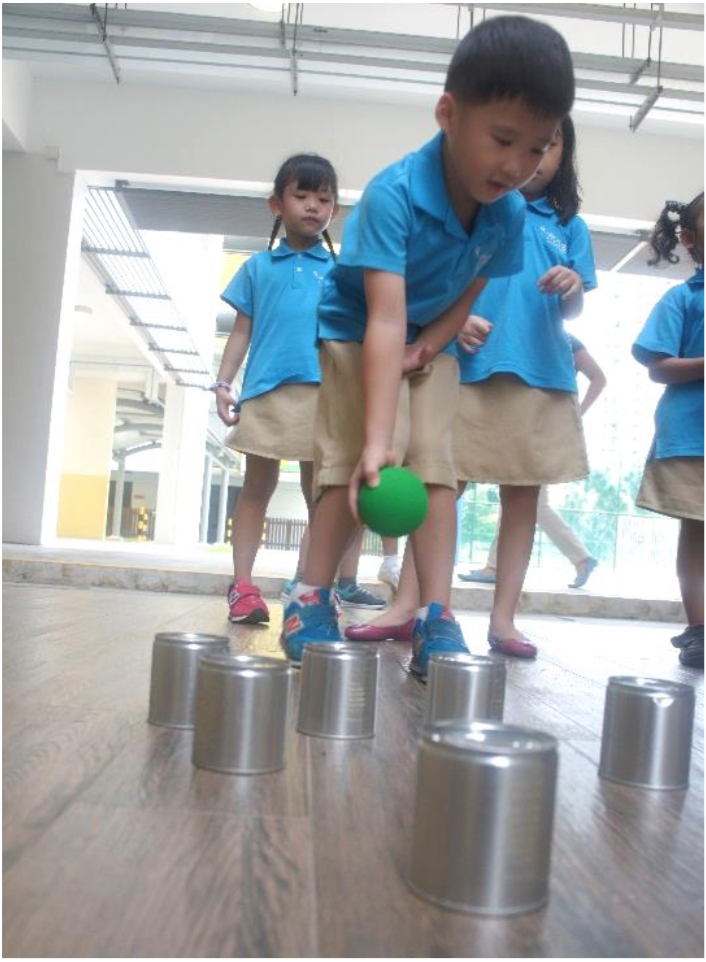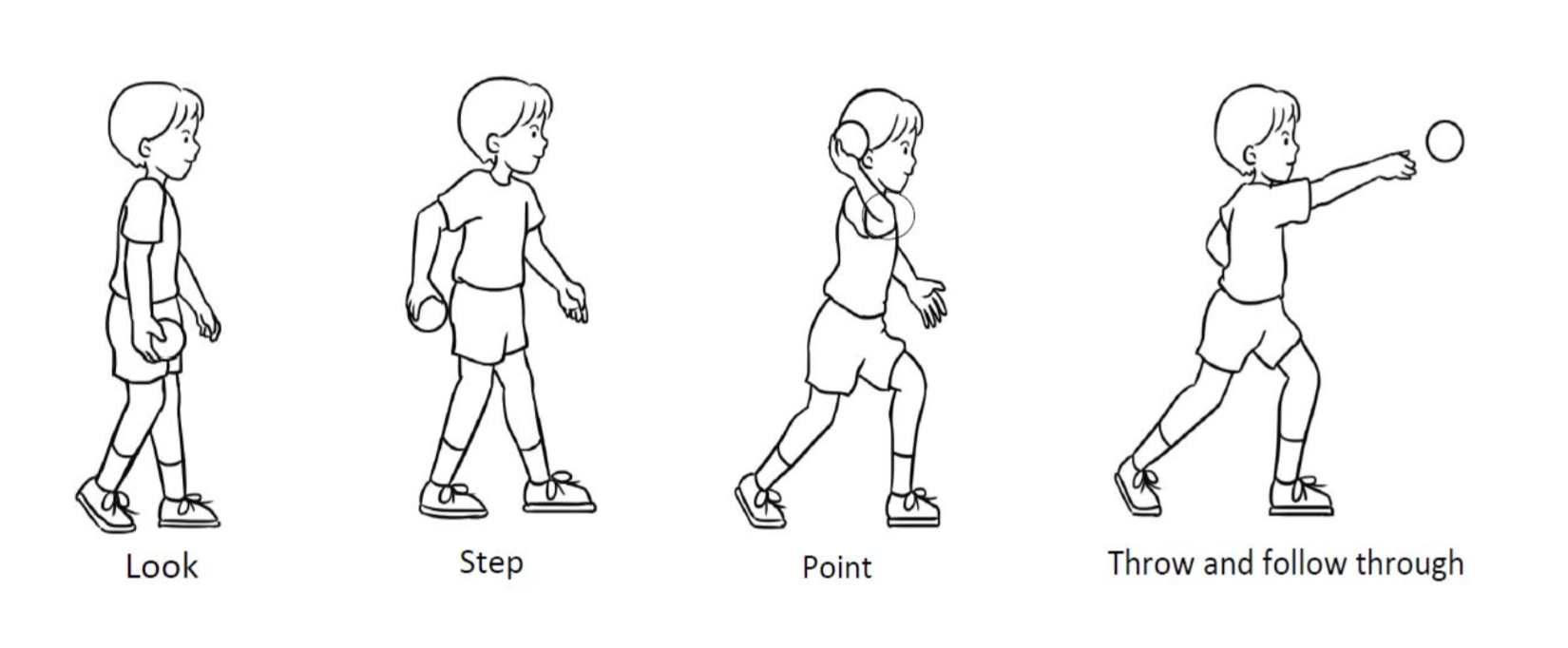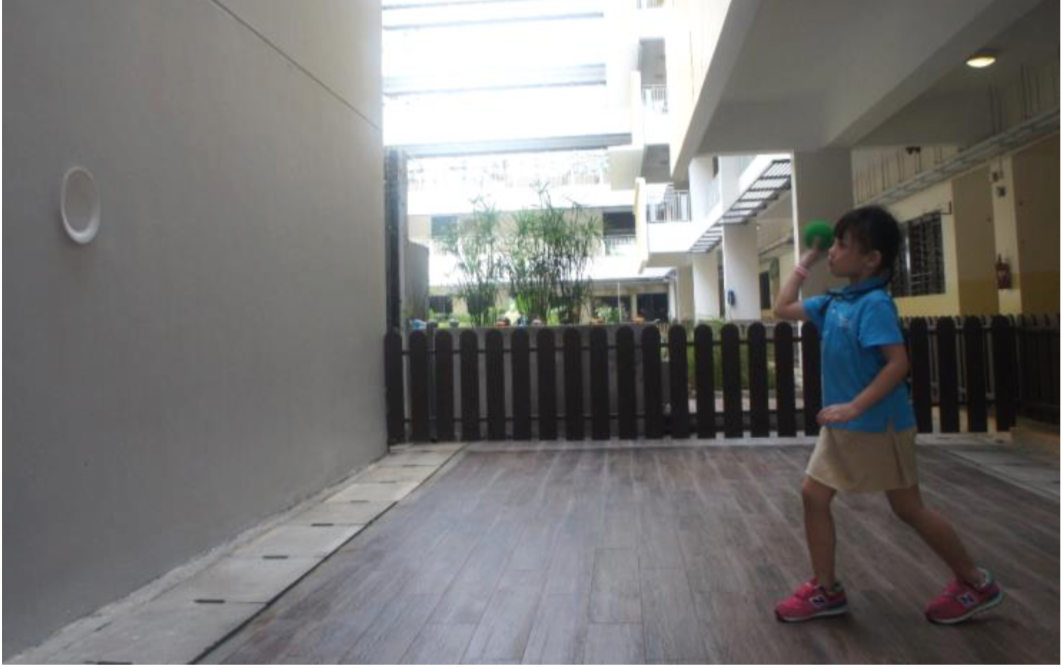"Bola Tin" • MOE Kindergartens
Overview
|
Learning Areas |
Learning Goals |
|
Motor Skills Development (MSD) |
LG2: Demonstrate control, coordination and balance in gross motor tasks |
|
Social and Emotional Development (SED) |
LG4: Communicate, interact and build relationships with others |
Learning Objectives:
Children will be given opportunities to:
- Demonstrate body coordination as they perform the overhead throw
- Work and play cooperatively in groups to complete a task
#1 Building on children’s curiosity
Use stimulus such as concrete materials or pictures to get the children interested and build on their natural curiosity. This encourages them to explore and construct their own knowledge.
How?
For example, before teaching the overhead throw:
1. Show the children the equipment that they will be using (i.e., 6 tin cans and a soft sponge ball). Get them to explore playing with the tin cans and ball. Invite a few children to talk about and show different ways of playing with them.

Exploring different ways of playing with the tin cans and ball
2. Show photographs of the traditional game “Bola Tin” to get the children interested. Engage them in a class discussion about what they see in the photograph using questions such as:
a. What are the children doing?
b. How do you think the game is played?
#2 Using cues to scaffold children’s learning
Use verbal and visual cues to focus your children’s attention on the series of actions or movements involved in performing the skill. This scaffolds their learning and helps them to acquire the motor skill more easily.
Teaching cues are instructional statements which communicate the key actions involved in performing the skill. These verbal prompts help children to pay attention to how they should move while visual cues show how the actions look like.
How?
For example, when teaching the overhead throw:
1. Demonstrate how to perform the overhead throw using the following teaching cues:
- Look – Hold the ball in one hand and look at the target
- Step – Take a step forward with the food opposite to the throwing hand
- Point – Bring the ball up and behind the ear and point at the target with the elbow
- Throw and follow through – Release the ball and follow through by swinging the throwing hand forward
| Refer to NEL Educators’ Guide Volume 5, Annex B (page 67 – 72) for more examples of teaching cues. |
|---|
2. Use cue cards with pictures and key words to illustrate the series of actions involved in performing the overhead throw.

#3 Providing opportunities for practise
Provide ample opportunities for your children to practise and reinforce the motor skill. Observe them as they practise and provide feedback to help them improve their skill.
Games and relays are good ways to get the children to apply what they have learnt. They also encourage children to interact and work together with their peers.
| Games can be used to inject fun and enjoyment, and add variety to warming up and cooling down activities. |
|---|
How?
For example, after teaching the overhead throw:
1. Get the children in small
groups. Provide each group with a soft sponge ball and set up a target (e.g. a
large paper plate) on the wall. Have them practise the overhead throw by taking
turns to throw the ball at the target.

2. Provide each group with a soft sponge ball and tin cans. Have the children stack the tin cans in the form of a pyramid on a chair or a bench placed near the wall. This elevates the height of the target and encourages them to use the overhead throw.
3. Organise a relay which incorporates the traditional “Bola Tin” game. Get the children to:
- Run from the starting line to a designated spot;
- Throw the ball and knock down as many tin cans as possible;
- Retrieve the ball, run back to the starting line and pass it to the next child; and
- Continue with the relay until all the tin cans are knocked down.
| Increase the difficulty level by increasing the throwing distance. |
|---|
4. Provide feedback to help
your children improve on their motor skills. Take a video of them practising
the overhead throw. Watch the video together and get them to talk about what
they have done well and how they could improve their overhead throw. Use the
teaching cues to facilitate the discussion.